One of the fascinating aspects of exotic gardening are finding plants that are hardy versions of common and well known houseplants like the Wandering Jew plant (Tradescantias). These plants are very easy to propagate and we have planted several types outside through the years with varying results. Some come back strong whilst others come back weak or very late in the season, some do not, and even the odd one or two sited on sheltered areas remained evergreen on previous winters.
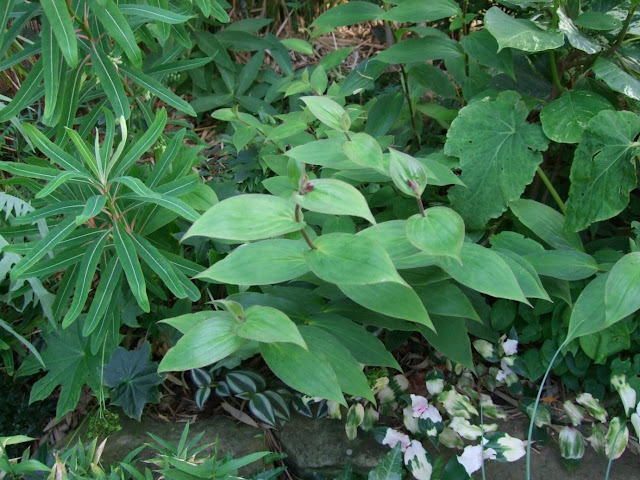 |
| A couple of Tradescantias on the edge of a border |
However, none of them you can genuinely tag as reliably hardy after a hard winter. But there is one type that I can say reliably hardy, in our location at least, and that is the Spotted Wandering Jew, Tinantia pringlei.
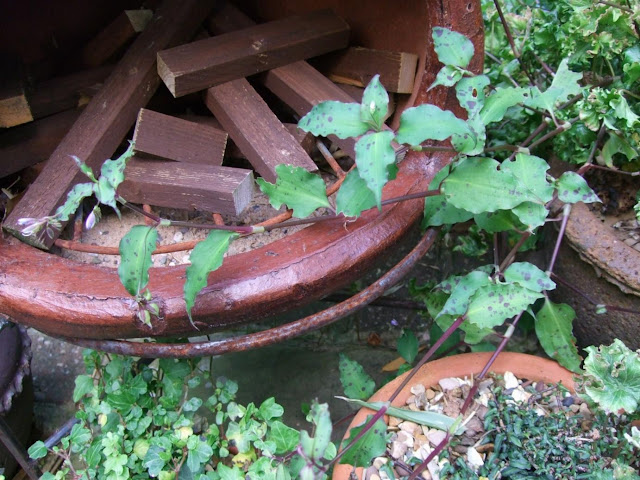 |
| Scrambling away... |
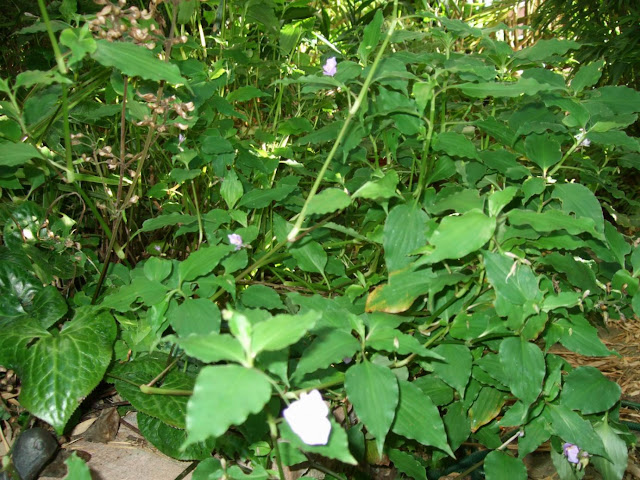 |
| A clump in dense shade |
Another one we tried is the variegated version of the same plant. I was doubtful at first on the stability of its variegation and that it would revert when it comes back in the spring. Much to my pleasant surprise it has proven otherwise and the variegation has remained stable on next years growth.
Apart from it's preference for moisture retentive, organic rich areas, I find it unfussy to grow and does well in both sun or shade. However, grown in dense shade it tends to lose the purple spotting on its leaves and becomes plain green (but still attractive).
So if you like the look of Wandering Jew plants but prefer something more permanent and not have to bed out in the summer then this is worth considering.
Mark
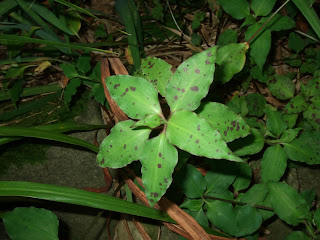
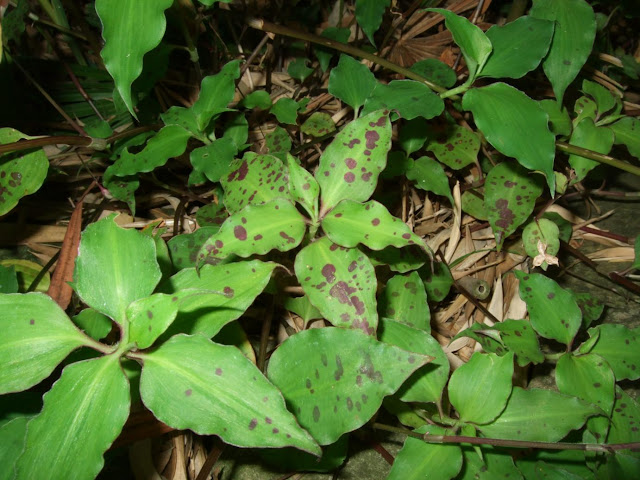
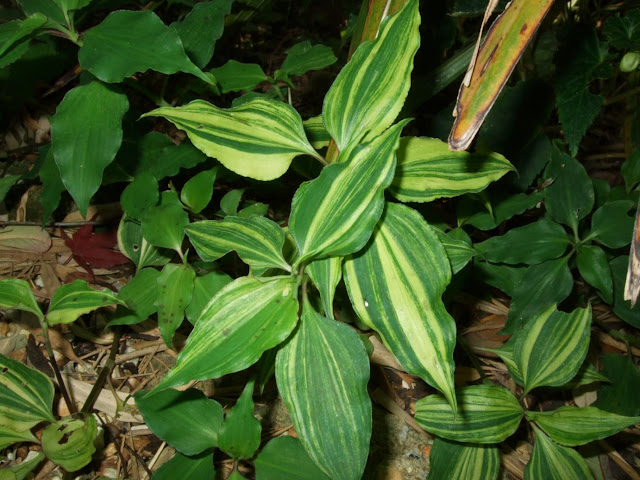
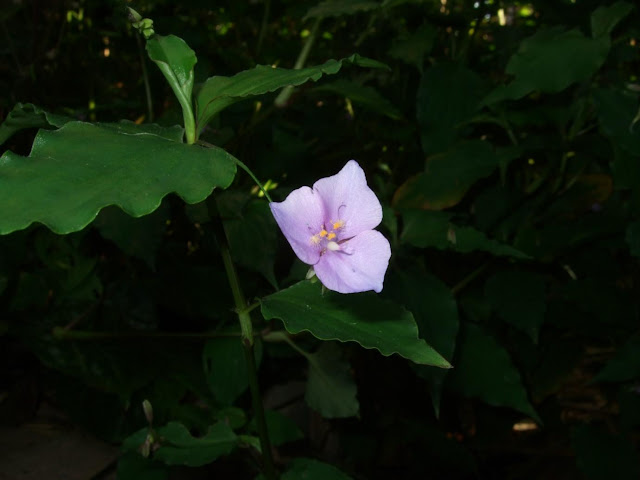

 This gardening blog follows our journey as we create our Tropical and Exotic themed garden. We hope you'll enjoy the journey as much as we do. We started our Exotic Garden in 2005 and this site will show its development, as well as our travels, both abroad and within the UK to gardens, nurseries and friends.
This gardening blog follows our journey as we create our Tropical and Exotic themed garden. We hope you'll enjoy the journey as much as we do. We started our Exotic Garden in 2005 and this site will show its development, as well as our travels, both abroad and within the UK to gardens, nurseries and friends.














Hi Mark do you recall that it is a weed here? But i also see different types now, though haven't seen yet that dotted one! We have a different variegated type in the building landscape of the office which grows so fast and now the gardener cut it often. If only it can be eaten by animals, it will be nice. My cousin has a variety with pink margins, and when planted in hanging baskets look nice too.
ReplyDelete'Wandering Jew'...horrible name... is an absolute weed here. Without cold winters to nip it back it just runs wild and has broken many a gardener's heart. Lots of dogs and cats are allergic to it too and end up with horrible itchy rashes. It would look great in you jungle though.
ReplyDeleteI always find it interesting what all you can have outside. Love the variegated plant. Reminds me of a Hosta.
ReplyDeleteCher Sunray Gardens
Interesting and entertaining replies Andrea, Hazel :) One person's weed is another person's desirable plant, and in this case the location in the world where the plant grows matters.
ReplyDeleteAndrea, yes I remember how invasive this plant is there, reminds me also of Morning Glory which is a popular annual here but extremely invasive there. It's the winters here that curbs their vigour but still remains a popular houseplant.
Hazel, I'm not surprised it goes rampant there too, as on milder winters here some remain evergreen, more so there where the winters are even milder than here (usually). I must say that if this plant had the same vigour here my regard for it would be different (so in a way I'm glad it cannot go rampant here) :)
Tinantia is much more benign though, and seems perfectly suitable in our region. But I do wonder how it will behave in milder temperate areas like Madeira, etc...
Cher, some of the plants that we have here growing outside would be suitable in your location too, vice versa :)
ReplyDeleteI'd like to grow some stripy leaved plants.
ReplyDeleteI didn't realize there were different varieties of this plant. Thanks for showing them - especially the spotted variety, which is quite unique and interesting, although I think I like the variegated form better.
ReplyDeleteLovely flower. I had tradescantias for a while, it wasn't the winter that did for them so much as the slugs! I lost one plant within weeks of planting it.... Like the green stripy leaves.
ReplyDeleteWe have quite a few varieties tradescantias in Oz. Some are weeds but some are great ground covers ifyou keep them under control. Some are cold sensitive even in Queensland.
ReplyDeleteI know those plants as purple hearts, they are very beautiful. The ones we got at my house in Mexico, we got from the wild at a beach nearby. If we water it scarcely it turns a beautiful purple tone.
ReplyDelete